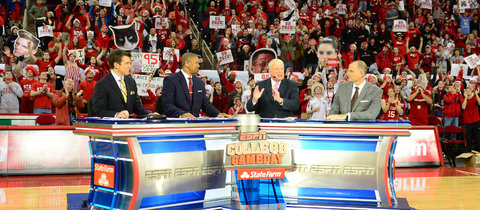Major retailers, like Walmart and Kohl’s, that cater to budget-conscious customers with lower incomes cited sluggish sales this week as they decreased their annual forecasts. Macy’s, with a slightly higher-income clientele, did not meet analysts’ expectations for the first time in 25 quarters.
But even upper-income consumers do not seem to be spending as freely as some hoped. While Nordstrom’s, which reaches a middle-to-luxury-end market, reported a higher-than-expected quarterly profit on Thursday, it too said sales “remained softer than anticipated” and lowered its forecast.
The latest sales reports painted a bleak picture for a sizable swath of the retail sector even as other economic indicators, like an increase in auto loans, showed signs of consumer confidence.
“There is a certain segment of the population that is faring well in this economy and have seen their net worth rise sharply with stock and housing market gains,” said Ken Perkins, president of Retail Metrics. “Then there is the much larger segment of Americans that are working in low-wage jobs, part-time jobs, that are struggling to make ends meet and are living paycheck to paycheck. They are not spending beyond necessities.”
In a call with reporters Thursday, Walmart’s chief financial officer, Charles M. Holley Jr., said there was “a general reluctance of customers to spend on discretionary items right now.”
As the back-to-school season reaches its peak, some retailers are not optimistic that they could see a big revival among shoppers. “The expectations through the end of the year are really through the lens of the cautious consumer,” Mr. Holley said.
A few major factors have impeded progress for a lot of Americans as the country wades out of the recession. Job-market growth has been decent, but the jobs added have not.
“A lot of the gains have been in extremely low-paying sectors: retail, health care, temporary employment,” said Joshua Shapiro, chief economist at MFR. When it is not full-time work, he said, benefits are low to nonexistent.
“If you dig below the surface, it’s not that wonderful of a picture,” he said.
Retailers also singled out the payroll-tax increase as one reason consumers were feeling thrifty.
“If you’re making around $50,000 a year, that’s $40 a paycheck that our customer doesn’t have that they would’ve had last year” Mr. Holley said.
While retailers tend to offer excuses for missing quarterly results — good weather, bad weather, sporting events — economists agreed that the tax increase was affecting stores’ sales.
“In terms of people who are paycheck to paycheck, which is a good chunk of this country, and certainly a good chunk of lower-end retailers’ customers, it has a significant effect,” Mr. Shapiro said.
Other economic indicators, like the upswing in the housing and stock markets, have not meant much to low-income shoppers.
In the housing market, “first-time buyers, in particular, have been waning,” said Diane Swonk, chief economist at Mesirow Financial.
Mr. Shapiro said many sales are due to “speculative institutional demand,” not typical home buyers.
Teenagers, too, are having a rough time, as shown by a recent earnings report from Aeropostale and an earnings warning from American Eagle.
“Teenagers have not had jobs for a while, and have to compete with older workers, and the back-to-school market’s not looking terrific this year,” Ms. Swonk said. “It’s about the unevenness of the recovery across both age and income groups.”
For Wal-Mart Stores, profit increased by 1.3 percent, to $4.07 billion, for the quarter and sales rose 2.4 percent, to $116.2 billion, both missing analyst estimates. The key measure of same-store sales dropped 0.3 percent in the United States; analysts had expected a 0.7 percent increase.
The company’s international unit, which had until recently been growing at a fast clip, also turned in sluggish quarterly results, with sales growing 2.9 percent, to $33 billion.
“We’ve seen customers both in mature and emerging markets curb their spending,” said C. Douglas McMillon, chief executive of Wal-Mart International. “We believe that environment is going to remain through the end of the year.”
The company decreased its full-year guidance for net sales growth to 2 percent to 3 percent, from 5 percent to 6 percent.
Also, “somewhat uncharacteristically for Wal-Mart,” according to a Sanford Bernstein analyst, Colin McGranahan, the company lowered its annual earnings per share forecast, to $5.10 to $5.30 from a previously issued $5.20 to $5.40.
Nordstrom’s quarterly profit of $0.93 per share was above analyst expectations for $0.88 a share. But it, too, lowered its annual forecast, to $3.60 to $3.70 a share versus its earlier outlook of $3.65 to $3.80.
Kohl’s, which also reported results Thursday, said its quarterly profit fell 3.5 percent, and also lowered its annual earnings-per-share forecast, to $4.15 to $4.35, down from $4.15 to $4.45.
The results added to worries about the retail sector.
“We believe that much of our weakness is due to the health of the consumer,” Macy’s chief financial officer Karen Hoguet told analysts.
Macy’s on Wednesday lowered its annual forecast, to $3.80 to $3.90 a share from $3.90 to $3.95 a share.
“When we do see good things in the economy, sometimes they don’t immediately flow through to a paycheck. Remember how the average American lives,” said Mr. McMillon of Walmart.

Article source: http://www.nytimes.com/2013/08/16/business/wal-mart-lowers-outlook-as-consumers-hold-back.html?partner=rss&emc=rss

